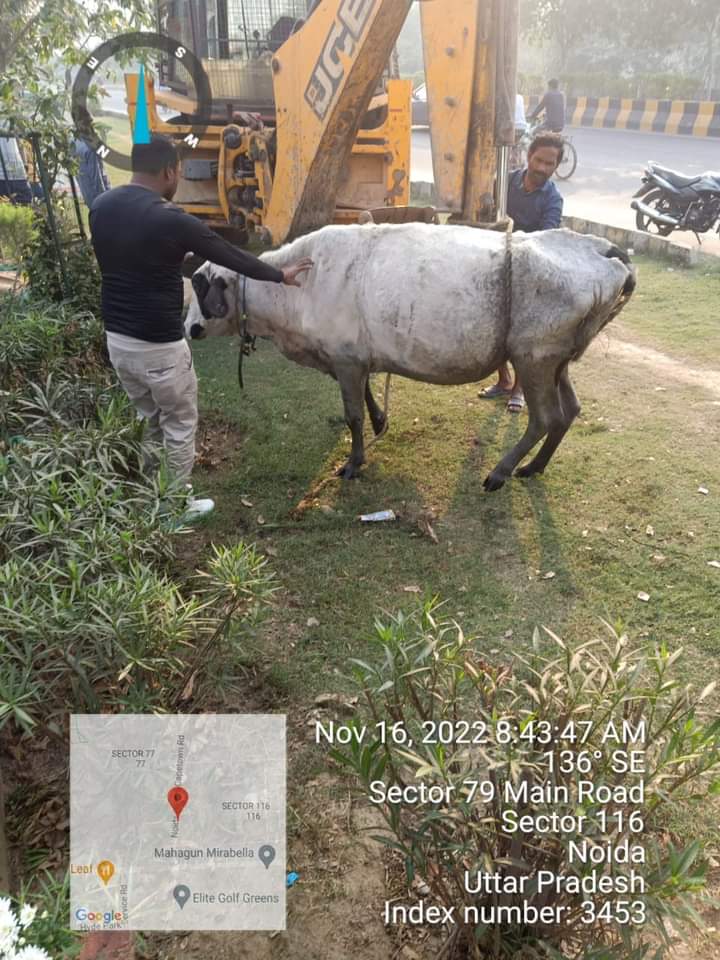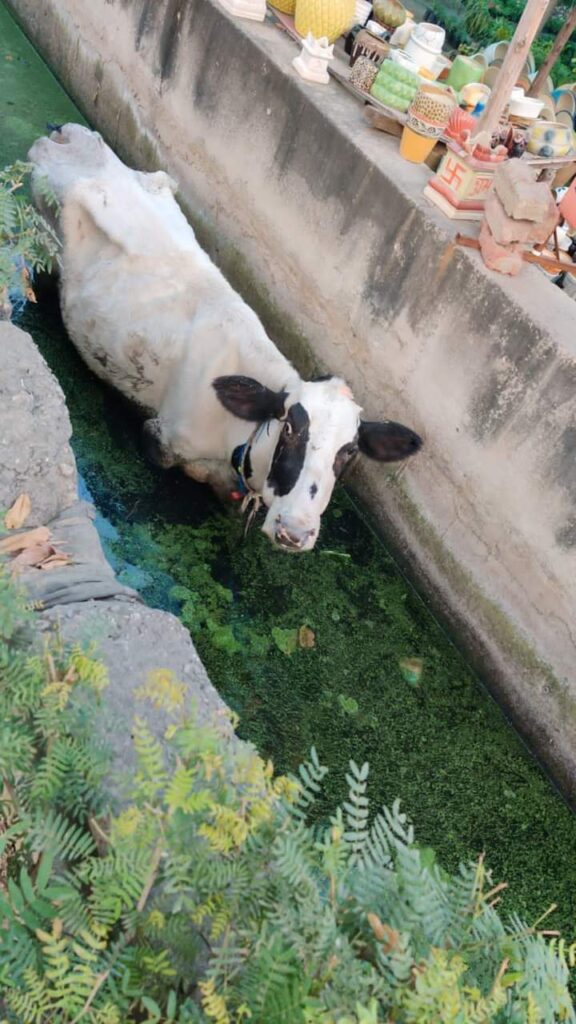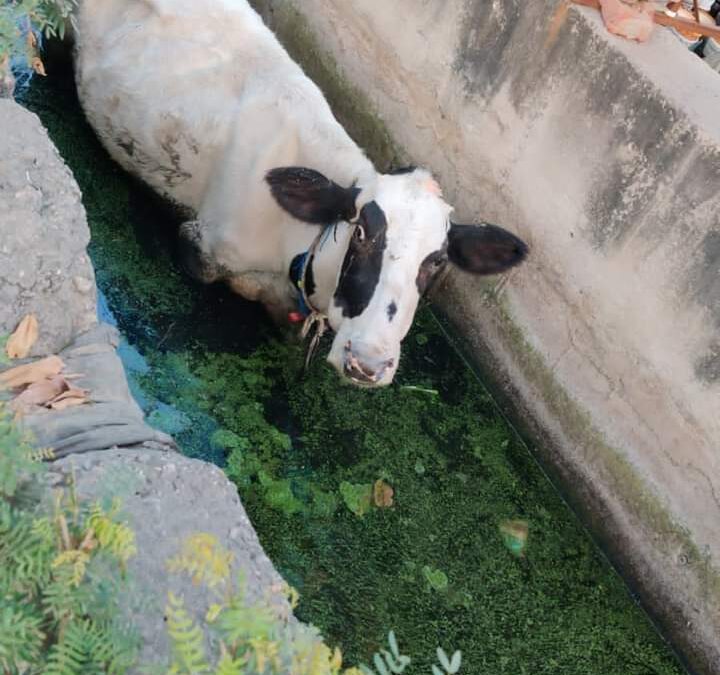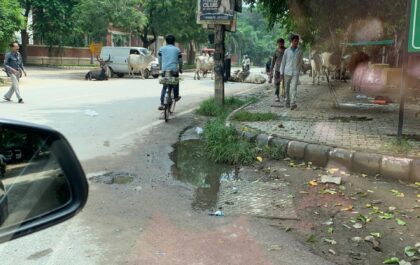Samvada News Bureau
A cow fell in the Nallah flowing along the periphery of the Sector. Fortunately it was reported well in time and the cow could be saved. This open nallah that poses a lot of other hazards too. Be sides the problem of mosquito breeding, how do noxious gases emanating from these polluted open drains crisscrossing Noida impact the health of residents?
It is the hydrogen sulphide emanating from the polluted Kondli and Shahdara drains that reacts with oxygen and water vapour in the air to form sulphuric acid. This is responsible for corrosion of steel, brass and iron (plumbing and bathroom fixtures), and copper (wire circuitry in electronic goods and cooling coils in air-conditioners).
Newborns, children, senior citizens, adults with lung disease, and asthmatics are most vulnerable to the harmful effects of nala gases. Yes, it is sulphur dioxide and sulphuric acid emanating from these two drains that cause eye, nasal and throat irritation leading to coughing, wheezing, sore throat, and shortness of breath, chest pains, and fluid accumulation in the lungs. It causes asthma attacks, heart and lung disease and respiratory problems in susceptible population groups.
Prolonged low-level exposure may cause fatigue, loss of appetite, headache, irritability, poor memory, and dizziness.
Methane, generated when organic matter is decomposed by a variety of bacterial processes in the nala, displaces normal transient air and results in an oxygen deficient environment.
Several long term epidemiological studies have found that populations living in areas characterized by high concentrations of particulate matter and sulphur dioxide tend to have a high prevalence of respiratory illnesses and decreased lung function.
These gases, over time, can lead to lowered resistance to heart and lung diseases in the general population due to diminished pulmonary function. Lung capacity of children living in such polluted environments can be reduced by as much as 20 percent. Bad air impact can actually be intergenerational since a fetus exposed to air pollution can cause changes in the genes.
In short, the effect of these toxic gases is to produce a hypofunctional respiratory system.
Prolonged exposure to hydrogen sulphide can produce olfactory fatigue, whereby the scent of the foul smelling gas becomes undetectable; we become comfortable with our own level of uncomfortableness and no longer realize that we’re not functioning at our best.
There are a few suggestions from experts that can minimize the negative impact.
- Preventing discharge of untreated wastewater in Noida drains by high-rise apartments, residential units, villages, builders and industries, 2. To remove encroachments on nala embankments to prevent disposal of wastewater in these drains , 3. Setting up new STPs and increasing capacity of existing STPs and decanting sludge at de-sludging points , 4. Construction of public toilets
It is important for all RWAs in every society, especially those near which the nala flows, to build a strong community voice and prevail on our elected representatives to ensure that Noida Authority accords top priority in fund allocation and execution of the Clean Nala Project, even if it means de-prioritizing luxury projects.


Popular Stories
Football Tournament @Princeton
More Than a Festival: The Art and Power of Durga Puja
Personality of the Month- ‘Dr Usha Mediratta’
Stray Cattle Menace In Front of Galleria
The Chronicles of Malibu Towne: A Mosquito’s Tale
“Senior Living Is Not An Old Age Home” say Mr & Mrs Bose
Recent Stories from Nearby
- Radha Krishan Mandir Updates November 19, 2024
- My Game Stall in JCO Diwali Mela November 19, 2024
- Karvachauth Celebration in C Block Club November 19, 2024
- Experience of Senior Citizen Chander Prakash Sahdev November 19, 2024
- A Quiet Library November 19, 2024







